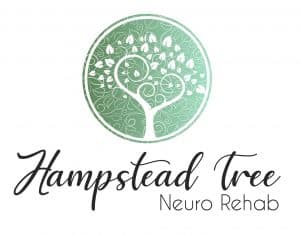
After a stroke, many everyday actions we take for granted—such as the movement and use of limbs—can be severely impacted. Around 80% of stroke survivors experience some impairment of an arm on one side of the body. However, you can regain the use of your arm after a stroke through rehabilitation.
The use of an impaired arm after a stroke can be significantly improved and, in some cases, fully regained through a variety of treatments, including physical therapy, electrical therapy, careful arm positioning, or medications.
The treatment method employed and its effectiveness for stroke survivors will depend on various factors, such as the level of mobility and strength in the arm following the stroke and the age of the patient. Doctors and therapists will work with the patient to develop a treatment plan that takes these factors into account.
Physical Therapy for Arms After a Stroke
After a stroke, you will work with an Occupational Therapists and a health care team to regain the use of your arm. These treatments will begin as soon as possible after the stroke, usually within a couple of days of the health event. Starting treatment as quickly as possible is essential to giving you the best chances for recovery.
While your physician will be able to recommend the best rehabilitation plan for your circumstances, common elements of physical therapy after a stroke include:
- Stretching exercises: A stretching regimen is an essential step in regaining mobility in your arm after a stroke. Your physical therapist may stretch your arm themselves or teach you how to do the exercises yourself. Over time, these stretches will help you to move your arm more easily and improve your range of motion if it has become limited.
- Strength-building exercises: In addition to limiting mobility, a stroke usually weakens the arm it affects, sometimes significantly. These exercises will focus both on the whole arm and particularly on the hand, helping you regain the ability to lift and grasp things.
These types of exercises and their difficulty will depend on your arm’s condition and will be determined by your physician.
Levels of Physical Therapy
The difficulty of these exercises varies widely and will depend on the level of your injury. Your therapists will assess your condition and will seek to balance trying to regain strength and mobility as fully as possible while being careful not to cause strain or further injury to your arm that will set your progress back.
As your condition and strength improve, you may progress through gradually more challenging exercises and eventually to a more rigorous form of strength training if you have fully regained motion in your arm.
Here are some examples of the basic levels of exercises in physical therapy for an arm after a stroke:
Passive Arm Exercises
If a stroke has completely or partially paralyzed your arm, you will not be able to carry out “active” exercise, which requires movement. Instead, passive activities will be the first stage of rehabilitation.
You (with your strong arm) or a physical therapist will move your arm for you, beginning to stimulate and rewire your brain, which is the first step in the process of regaining use of the arm. These exercises include things like passive inner arm and wrist stretches.
Easy Arm Exercises
Once partial mobility has been gained, you will be moved to easy exercises, which are a combination of some passive and some active—but very light—movement.
These exercises continue to focus on rewiring the brain to increase mobility in the arm. These exercises include grasping and moving objects with both hands (which can be entirely passive or slightly active for the impaired arm).
Moderate Arm Exercises
While not everyone who has undergone a stroke will regain enough mobility in their arm for active exercises, these moderate exercises are the first step in using a limb that has begun to regain some mobility.
While these exercises will start to build strength in the arm, they are primarily focused on the first steps of practicing movement and mobility. These exercises will include pushing or sliding objects with the impacted arm or arm curls without weights.
Difficult Arm Exercises
If you have regained or significantly improved mobility and range of motion in the arm, exercises will be added to strengthen the arm while increasing mobility. These exercises may include arm curls or lifts while grasping light objects.
Strength Training
If your range of motion and mobility has been entirely regained, your physician may decide that you are ready to move on to more rigorous strength training to continue to restore your arm to its pre-stroke state. This may involve strength training with dumbbell weights and can be added to and escalated as your arm grows stronger.
It is crucial for rehabilitation to listen to your physician’s advice and not push your arm too far too soon, but to work your way up slowly in building mobility and then strength.

Functional Electric Therapy and Medication for Arms
If physical therapy is not producing the desired results, your doctor may decide to pursue other options as well:
- Because a stroke and its effects are rooted in a brain event, electrical stimulation to the brain can help stimulate the nerves between your brain and your arm, increase your control over your arm, and even strengthen the arm’s muscles. It can also help to reduce pain in the arm.
- While no medicine can cure the effects of a stroke, various medications can aid the strengthening process. Oral medications will often be prescribed alongside physical therapy, which can relax muscles and reduce the tightness and stiffness that usually follows a stroke, enabling more effective stretching and exercise in physical therapy.
- Localized injections of botulinum toxin may also be used in the arm to treat areas of stiffness and tightness, which cause relaxation of the muscles and can reduce pain and increase the effects of physical therapy.
Preventing Further Injury to Arm After a Stroke
Paralysis or weakness in the arm, a common effect of a stroke, can result in further damage, particularly to the shoulder. Without proper care, there can be problems with separation between the arm bone and shoulder socket, causing additional pain and injury.
For this reason, careful and intentional positioning of an arm after a stroke is crucial, and this positioning will concentrate on the shoulder joint. It may include wearing a sling or a harness to keep the shoulder joint still or the intentional placement of pillows or lap trays while you are at rest.
Your physician will include these positioning guidelines in your treatment plan, and following these to prevent further injury is an integral part of the rehabilitation process.
Conclusion
As with any injury or rehabilitation process, when working to recover the use of an arm after a stroke, it is vital to pay close attention to the treatment plan prescribed by your physician.
Remember: recovery will take patience. While in some people, significant improvements can be seen in weeks after the stroke, results of physical therapy more commonly take three to four months to appear. In some patients, progress can continue into the first and second years after a stroke.
With careful attention to your treatment plan and steady work, there is a good chance you can regain the use of your arm after a stroke.
Content Disclaimer
The information contained above is provided for information purposes only. The contents of this Blog article are not intended to amount to advice, and you should not rely on any of the contents of this Blog article. Professional advice should be obtained before taking or refraining from taking any action as a result of the contents of this Blog article. OccupationaltherapyBlog disclaims all liability and responsibility arising from any reliance placed on any of the contents of this Blog article.

